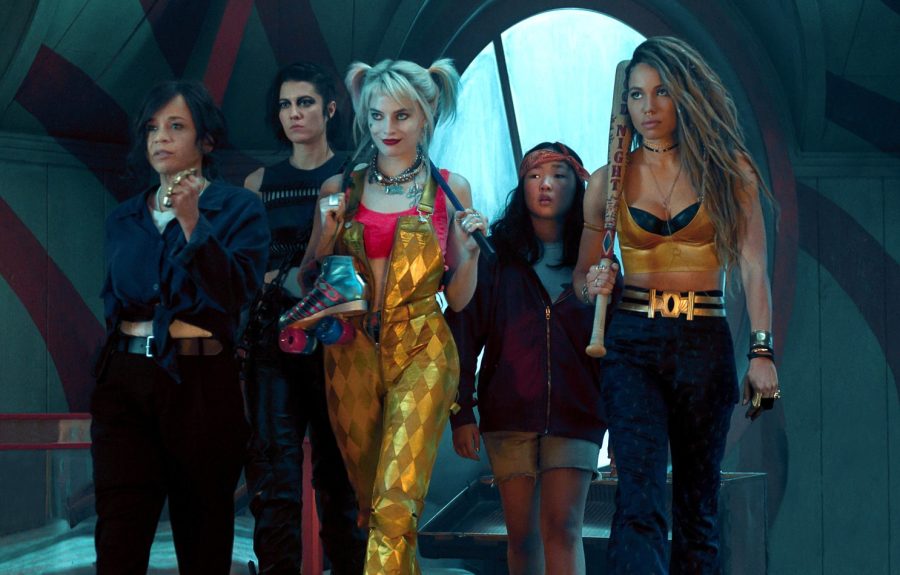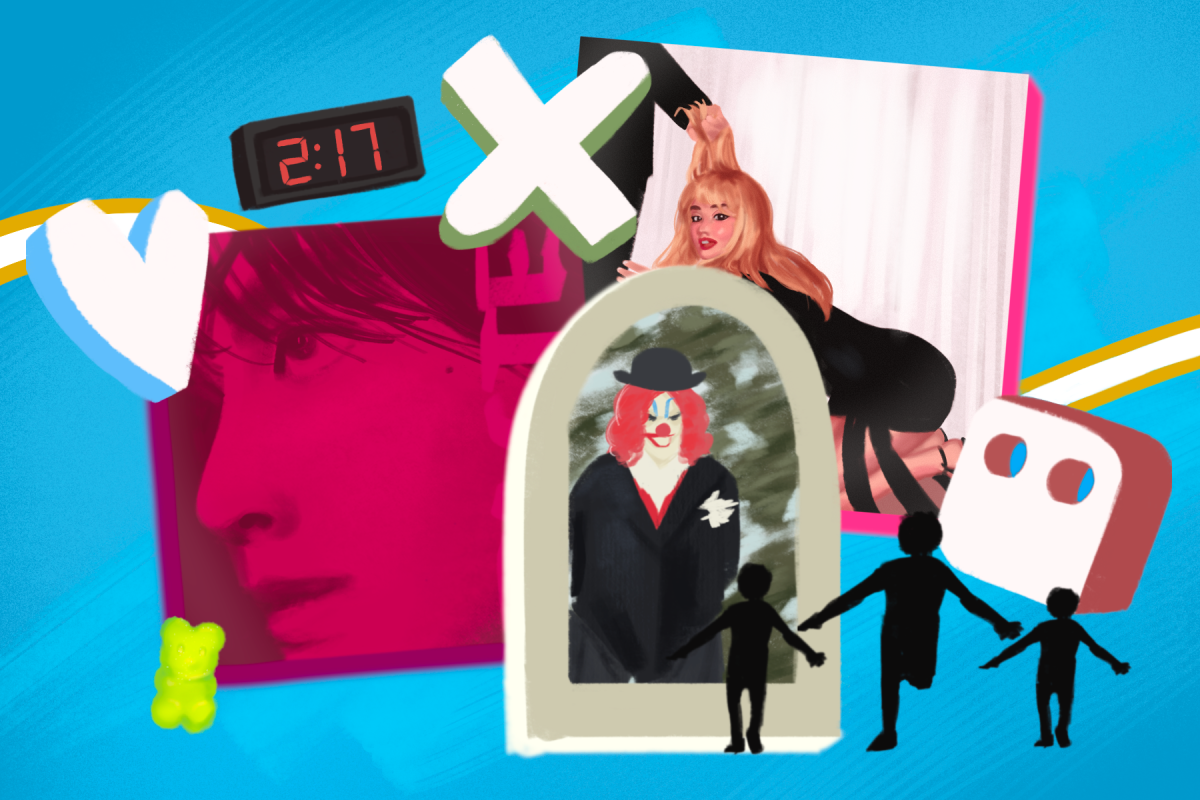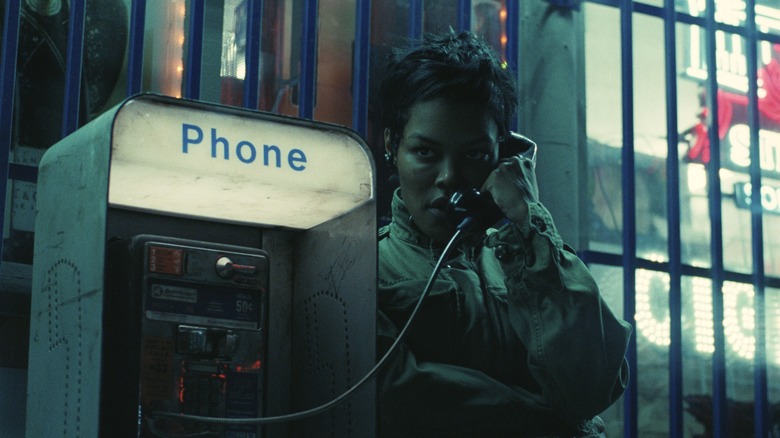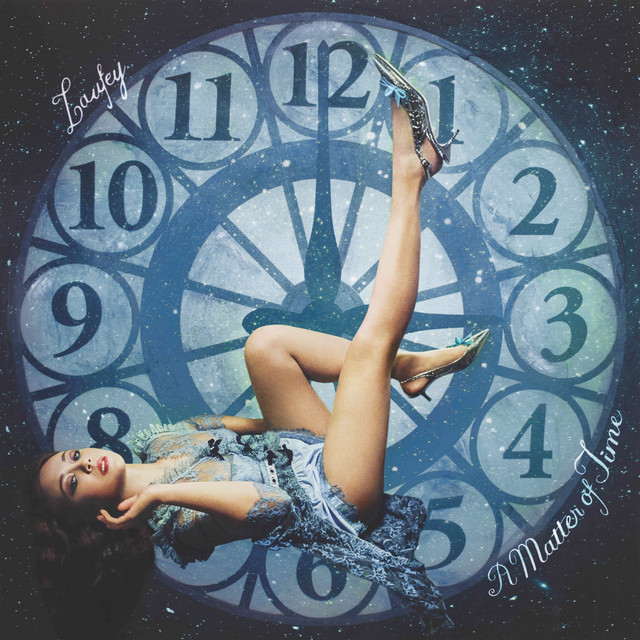In a-less-than-perfect 2020, the writers at A&E found themselves with much time on their hands to peruse streaming platforms and indulge in new hobbies. As we move into this new year, we reflect back on the new films, television series, and video games that made quarantine bearable.
Show: “Break It All” (Rompan Todo)

The Netflix original documentary series “Break It All” (Rompan todo) chronicles the birth, growth, and evolution of one of the biggest musical and cultural movements in Latin America. Beginning in the ‘50s, when the only Rock music available to the public were Spanish covers of popular English songs, the series brings audiences through the late 20th century and into the 21st with the rise of reggaeton. “Break It All” draws a clear line between each decade, allowing viewers to see how each generation influenced the next. The series is more of a crash course on Latin American rock, with only six episodes lasting between 45 and 55 minutes each. Audiences are introduced to major figures and bands in the movement, from El Tri’s Álex Lora to Soda Stereo’s Zeta and Charly, through intimate interviews. In these interviews, viewers are given a glimpse into not only the creative process of so many of these bands, but also the political and social context from which they emerge. The politics of the continent play a major role in the development of the genre, as many of the artists lived through dictatorships or imperialist interventions from other countries. “Break It All” is a must-watch for any fan of the Rock en español movement, and is a good starting point for anyone interested in learning more about Latin American pop culture.
— Elías Román, Senior Staff Writer
Film: “First Cow”

Like so many Americans caught between the throes of a global pandemic and an incompetent government, the protagonists in Kelly Reichardt’s “First Cow” escape to the wilderness and find comfort in the isolation from society that it offers. Although “First Cow,” is set in the 1820s, the film resembles the chaos of current times. In the case of Cookie and King Lu — whose friendship serves as the center of the movie — relief is found in the 19th century Oregon Territory.
The film’s main storyline begins when Cookie (John Magaro) abandons the group of fur trappers that he had been cooking for in order to help King Lu (Orion Lee) escape from vengeful Russians. Cookie finds King Lu hiding in the woods and offers him blankets and food. Here, we learn that King Lu had killed someone important to the Russian hunters, athough the context of the murder as well as much of King Lu’s personal history are left largely to the imagination. Both are ostracized by the larger society they inhabit: Cookie is constantly ridiculed by the other fur trappers for his baking hobby while King Lu’s identity as a Chinese man attracts the attention of racist frontiersmen. Cookie and King Lu form a seemingly effortless friendship as they bond over their shared identity as outcasts and cohabit Cookie’s humble cottage in the woods. It is upon the arrival of the first cow of the territory that Cookie and King Lu attempt to profit off of their instant connection. The cow, who is named Evie and owned by a wealthy English neighbor, is the most prized commodity in the territory of frontiersmen who lack even meager luxuries. By secretly milking Evie, the pair are able to bake and sell Cookie’s signature “oily cakes.” What ensues is a riveting tale of friendship, capitalistic ventures, and baking.
With much of the year spent indoors and away from friends and family, “First Cow” offers the perfect retreat. Director Kelly Reichardt and cinematographer Christopher Blauvelt embellish the film with scenes of the lush Pacific Northwest that free quarantiners from the confines of their living rooms. The most poignant scene of the film is the movie’s ambiguous ending: Cookie and King Lu are locked in an intimate embrace, sheltering themselves from the tumult of the outside world. When pandemonium emerges — like a terrorist attack on the nation’s capital, for example — human decency and connection prevail.
— Sarah Delima, Contributing Writer
Film: “Birds of Prey”

“Birds of Prey” was the incel repellant that comic book film viewers deserved. Between “Joker” earning only two Oscar wins out of its 11 nominations, and the fresh release of “Birds of Prey” occurring within the span of less than a week of each other, watching DC films finally felt safe again. Although heavily criticized for its “surface-level” content and low box office numbers, it’s worth noting that 1) Comic book films are rarely viewed for their profound emotional depth and 2) Comic book films with female protagonists elicit a different degree of judgment, often in the form of New York’s straight bro film critics absolutely itching to tell a film and its female creative team that they failed to be feminist. These dudes can go back to marathoning “Fight Club,” “Joker,” and the director’s cut of “Justice League.” I don’t care. This was a film that raced through sickening villains, breakfast revenge montages, and confetti stick-ups, all with heavily stylized fonts and neon accents. It had relevant political engagement, bone-crushing fight scenes, roller derby competitions, and the perfect amount of explosions. “Birds of Prey” is an assembly of cool women in a film destroying a homicidal bozo, and it is wonderful. Relative to its genre, “Birds of Prey” ultimately gave audiences a fast-paced romp with an engaging storyline, distinct characters, and punchy, comic-book flair.
— Marina Lee, Senior Staff Writer
TV Series: “Normal People”

Hulu’s emmy-nominated series “Normal People” provided the breath of relief I didn’t know I needed in 2020. “Normal People” tells the all-consuming love story between teenagers Marianne (Daisy Edgar-Jones) and Connell (Paul Mescal) as they navigate life as young adults. The show takes place in Ireland where Connell and Marianne first meet when Connell picks his mother up from her housekeeping job at Marianne’s house. Marianne comes from a privileged, albeit abusive household while Connell comes from a poor, yet loving family. Their socio-economic disparity and different socializing behavior lead Connell to be embarrassed about his relationship with Marianne. As the story unfolds, Marianne and Connell face countless obstacles such as a close friend’s suicide and a physical abuse incident that bring them together for occasional one-night stands, but prevent the two from being in a stable and healthy relationship. Although they get together toward the end of the first season, Marianne encourages Connell to pursue a job opportunity abroad in New York, leaving viewers wondering if the pair will stay together after all.
Different from other shows that dramatize teen romances, “Normal People” humanizes young love and normalizes the cycle of falling in-and-out of relationships. It also touches on important issues like Connell’s mental health, Marianne’s eating disorder, and family abuse that all work together to tell Connell and Marianne’s complicated love story. “Normal People” is a must-watch for those looking to indulge in a complex, twisted, charming, and most of all, authentic love story in a time of uncertainty.
— Priscilla Hui, Contributing Writer
Videogame: “Valorant”

Around the beginning of March 2020, I moved out of UCSD back to my home in Los Angeles due to COVID-19, and around that same time, I bought my first gaming PC. Throughout the entirety of 2020, I downloaded and played several games, although my interest in each only lasted for a few weeks before they were uninstalled or forgotten in the corner of my desktop. However, one game still has me going back time and time again — “Valorant.”
Released on June 2, 2020 by Riot Games, the same creators behind “League of Legends,” “Valorant” is a tactical shooter game in which an offensive and defensive team subvert each other’s agendas to either detonate or prevent the detonation of a bomb before either team can eliminate one another. After playing this game for over six months now, the aspect that has kept me engaged for so long is the character depth both in game mechanics and in the world of “Valorant.”
One of the things I really enjoy about this game is how each character, or “agent” as they are called, has a specific kit that allows players to take on specific roles. I also like how Riot Games adds variation to abilities that would otherwise be the same amongst the kits. For example, certain agents use an ability called flashes to blind opponents. There are currently four agents as of January 2021 who use flashes: Yoru, Phoenix, Skye, and Breach. Each one is completely different from each other in terms of their movement and how they are set off. This depth in the specific kits of agents then flows into the other areas of strategy, including the combat, set up, and execution of plays, seeing as different tactics are needed for different agents. While some might view the specificity of each agent’s skillset as too rigid, I see it as forcing the player to push the capabilities of the agent to the limit, thinking outside of the box, and creating smart plays with what is given.
I greatly appreciate Riot Games’s efforts to set themselves apart in the tactical shooter genre through memorable characters and voice lines. Similar to “League of Legends,” “Valorant” features a diverse cast of colorful characters whose personalities are entertaining to play as and hear interact with the other agents through short quips in between rounds. There are dark, brooding agents like Omen and Reyna, stoics like Sova and Sage, cocky agents like Phoenix and Yoru, and joyful, upbeat characters like Raze and Killjoy. Another aspect of the agents that elevates the games is the lore behind each character. World-building is another intriguing aspect of the game as it entrenches its agents into a lore that provides insight as to which characters are enemies and friends through the use of agent biographies in-game and the animated cinematic trailers posted on YouTube.
Overall, “Valorant” makes for a rewarding tactical shooter game that rewards players for their mastery of the characters and the proper execution of offensive and defensive strategies. The agents are the highlight of this game, making for unique matches each time. “Valorant” provided an escape from the chaos of the world in 2020 and allowed me to play with my friends, while making new ones along the way.
— Hector Arrieta, Senior Staff Writer
TV/Anime: “Haikyū!! To The Top”

Four years after season three’s 10-episode-long game with powerhouse school Shiratorizawa Academy finally comes Haikyū!!’s much-anticipated season four — and the arrival of Karasuno High’s boys volleyball team to the Spring Interhigh, Japan’s national highschool volleyball tournament. Titled “Haikyū!! To The Top,” the return of the popular shōnen anime series is split into two halves, with the first half of episodes airing Jan. 11 and the second half delayed to Oct. 3, due to the COVID-19 pandemic. The first half follows the team’s preparation for Nationals, with attention to Hinata’s and Kageyama’s development as players, and their first match at Nationals against Tsubakihara Academy. Victory against Tsubakihara finds Karasuno matched against the formidable Inarizaki High in a nail-biting battle that stretches across the remaining half of the season.
“To The Top” sees Haikyū!! at its lowest and highest. Season four marks the series’ introduction of a new series director, chief animation director, and art style. The art style differs from previous seasons, with characters redesigned to better imitate the style of the anime’s original manga series. This decision met mixed reception, with the strongest critics pointing out how the characters appear more child-like and less expressive. Furthermore, a recurring critique is the season’s poor animation quality, especially within its first half. Certain scenes lose their fluidity and razor-sharp impact due to off-model characters and oversimplified action sequences. However, animation improves in quality with the later Inarizaki game, with critical moments like a set point seeing a revival of the anime’s beloved detailed close-ups and crisply shot spikes.
Yet what draws Haikyū!!’s loyal fans is not its animation but its characters, and “To The Top” builds upon what the series does best: creating a colorful, memorable cast of realistic and empathetic characters. The season delivers a refreshing array of new opponents, including Inarizaki’s Miya twins, who succeed in becoming instant favorites with their snappy humor, daunting skills, and worthy motivations to defeat our protagonists. On the other hand, familiar faces like Tanaka and Hinata shine in moments of growth and manage heart-stopping saves that, with scene-stealing voice actors, continue to make the series well worth watching.
Despite animation flaws, “To The Top,” like its characters, works hard to grow better and stronger. Its efforts pay off, and the season ends with an unforgettable showdown of strength and passion. Just as Karasuno’s team soars to extraordinary new heights, Haikyū!!’s fourth season proves itself to be a winner in 2020.
— Natalie Tran, Senior Staff Writer
Images as they appear courtesy of: The LA Times, The New York Times, Film at Lincoln Center, The Verge, NME.com, and Otakukart News.










